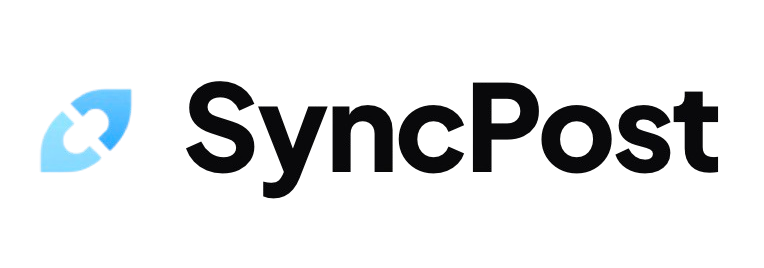
Understanding Social Media Management Fundamentals
Social media management is how you handle your online presence across platforms like Facebook, Instagram, and Twitter. Your business needs strong social media management because that's where your customers spend time - with over 4.9 billion people using social media worldwide in 2023.
Managing social media involves creating and sharing content, talking with followers, and checking how well your posts perform. You'll need to plan your content ahead of time, respond to comments and messages, and track basic metrics like likes and shares.
Success in social media management comes from having a clear plan and sticking to it. Think of it like running a mini TV channel - you need to know what content you'll share, when you'll post it, and how you'll measure if it's working for your audience.
The Strategic Framework for Social Media Success
Setting clear social media goals helps you measure what works and what doesn't. Your goals might include growing your following, increasing engagement, or driving website traffic. Before creating any content, you need to know exactly who you're trying to reach - their interests, behaviors, and preferred social media habits will guide your strategy.
Now that you know your audience, it's time to plan content that speaks to them. Think about the types of posts that will catch their attention, whether it's how-to guides, behind-the-scenes peeks, or customer stories. Your brand voice should stay consistent across all posts, making you instantly recognizable to followers.
Each social media platform has its own special features and user expectations. Pick the platforms where your target audience spends the most time, rather than trying to be everywhere at once. Make sure you have enough people and tools to manage your chosen platforms well.
Want to dive deeper into creating an effective social media strategy? Check out this comprehensive guide from Sprout Social for more detailed tips and best practices.

Essential Tools for Effective Management
Your social media management toolkit should include three main types of tools. You need scheduling tools to plan and post content automatically. Analytics tools help track your performance, while content creation tools make your posts look professional.
The best management tools offer features that save you time and reduce errors. For example, SyncPost lets you schedule the same post across different platforms with just one click. You can also preview how your posts will look on each platform before they go live.
Good tools work together to make your job easier. When your scheduling tool connects with your analytics, you can quickly see which posts perform best. This helps you plan better content for the future.
Maximizing Brand Engagement Through Management
Tracking your brand engagement starts with understanding key metrics that show how people interact with your content. Comments, shares, and likes give you clear signals about what your audience wants to see. These numbers help you make smart decisions about your future content.
You can boost engagement by posting when your audience is most active and creating content they care about. Try mixing up your content with questions, polls, and behind-the-scenes peeks at your business. Testing different post types helps you find what works best for your specific audience.
Quick responses to comments and messages make your followers feel heard and valued. Set aside time each day to reply to comments, answer questions, and join conversations your customers are having about your brand. A simple "thank you" or helpful answer can turn a casual follower into a loyal fan.
Want to save time while keeping your engagement strong across all platforms? SyncPost helps you post consistently to multiple social networks, making it easier to maintain active conversations with your audience everywhere they are.
Measuring Social Media Management ROI
Tracking your social media success starts with watching the right numbers. Your key performance indicators should include engagement rates, follower growth, click-through rates, and conversion rates. These numbers tell you if your posts are working and if they're bringing in sales.
Setting up tracking is simpler than you might think. Start by using the built-in analytics tools on each social platform. Facebook Business Manager and Instagram Insights give you all the basic data you need to start measuring results.
Looking at your numbers helps you make smart changes to your strategy. When you see posts with high engagement, make more content like that. If certain posting times get better results, adjust your schedule accordingly. Remember to check your data weekly and monthly to spot trends that can help you improve your results.

Emerging Trends in Social Media Management
Social media managers now use AI tools to schedule posts and analyze engagement data. These tools can predict the best posting times and suggest content improvements based on past performance. You can even use AI to create basic image variations and write first drafts of captions.
Instagram and TikTok have updated their algorithms to favor authentic, unpolished content over highly produced posts. Facebook now puts more weight on meaningful conversations in comments rather than just likes and shares. These changes mean you need to focus on creating genuine interactions with your followers.
Many social media teams are switching to micro-management cycles instead of long-term planning. You set weekly goals, test new content types, and adjust your strategy based on quick results. This flexible approach helps you stay responsive to trends and audience preferences.
Ethical Considerations and Best Practices
Your social media followers trust you with their personal information. You need to be clear about how you collect and use their data, from comments to direct messages. Always post your privacy policy where followers can easily find it.
Building real connections with your followers means avoiding fake engagement tricks. Don't buy followers or use bots to generate comments. Your audience can spot fake engagement quickly, and it can harm your reputation permanently.
When you use scheduling tools or automation for your social media, tell your audience about it. Being open about your use of automation tools helps maintain trust. Make sure to respond personally to comments and messages, even if some of your posts are scheduled.
Taking Your Social Media Management Forward
Good social media management comes down to three key things: consistent posting, engaging with your audience, and measuring what works. Your content needs to match what your followers want to see, and you need to post it when they're most active.
Start by picking two social media platforms where most of your customers spend time. Set up a simple content calendar for the next month, planning 2-3 posts per week per platform.
Here's what to do in your first week:
- Create 6 posts ahead of time
- Schedule them for your peak engagement times
- Spend 15 minutes daily responding to comments
- Track which posts get the most likes and comments
Once you've got the basics running smoothly, you might want to add more platforms or increase your posting frequency. A social media management tool can help you handle multiple accounts without spending hours switching between apps.
